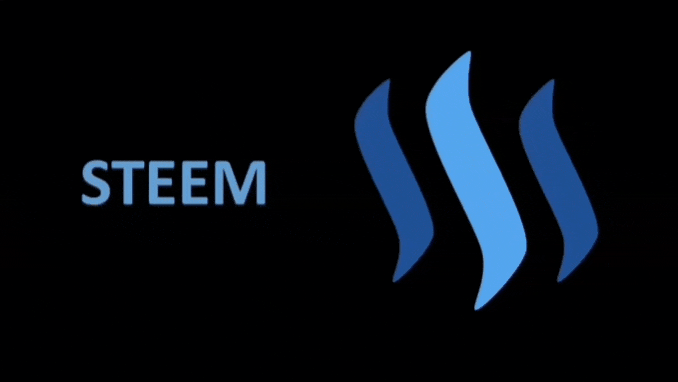Hi Everyone,
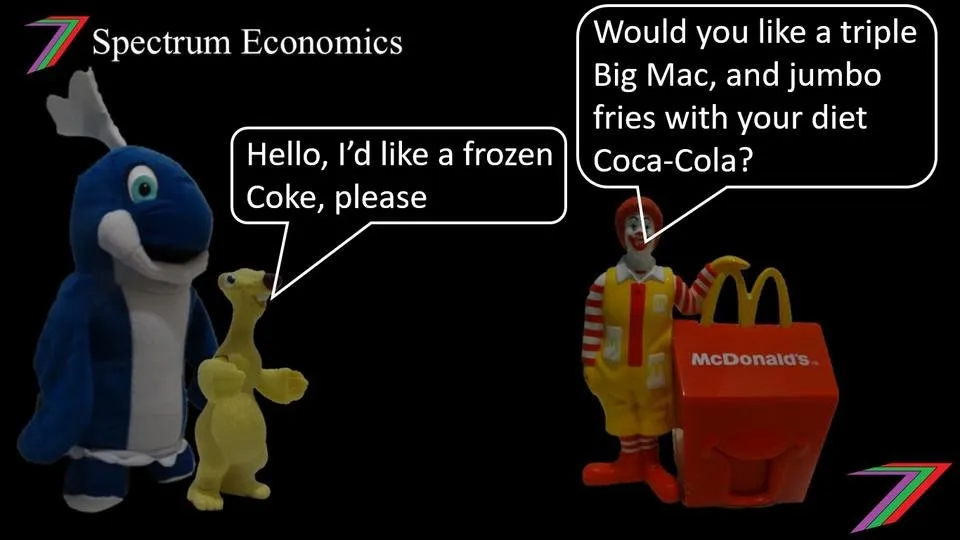
I am sure most of you have been to a fast food restaurant at some point in your life. Fast food restaurants often use a technique known as commodity bundling. Commodity bundling involves selling several complementary products together as a package. A fast food restaurant, might sell the burger, the chips and the drink as a meal. The price of the meal is lower than the combined price of the three items sold individually.
Why sell products together?

Selling products together enables a seller to capture more of the buyer’s consumer surplus (consumer surplus is the difference between what someone is willing and able to pay and the price they actually pay). For example, Jill may walk into a fast food restaurant feeling thirsty but not particularly hungry. Jill may be willing to pay $4 for a drink but only $1 for a packet of chips. The fast food restaurant sells drinks for $3 and chips for $1.50. Therefore, Jill buys only a drink. Jill has a consumer surplus of $1 (willingness-to-pay - price). If the fast restaurant sells the drink and chips as a meal at a price of $3.8, Jill will choose to buy the meal. Buying the meal gives Jill a consumer surplus of $1.20 (4 + 1 - 3.8), which is better for her than just buying the drink. The fast food restaurant gains an additional $0.80 revenue from Jill. If the cost of the chips is less than $0.80, the fast food restaurant has increased their profits from selling the meal to Jill.
Bundling products together does not always generate higher profits from each customer. For example, Max might be willing to pay $3.50 for a drink and $2 for a packet of chips. He would have bought the drink at $3 and the chips at $1.50. Hence paying $4.50 to the fast food restaurant. Now there is a meal, Max will choose to buy the meal to obtain his drink and chips. Therefore, Max only pays $3.80 instead of $4.50. The fast food restaurant has decreased their profits from selling the meal to Max.
To learn more about demand, supply and consumer surplus, I would recommend that you watch the following videos:
Demand and Supply - Part 1 Partial Market Equilibrium
Demand and Supply - Part 2 Demand and Supply from an Individual's Perspective
Demand and Supply - Part 3 Demand and Supply from a Firm's Perspective
Selecting the bundle and the price
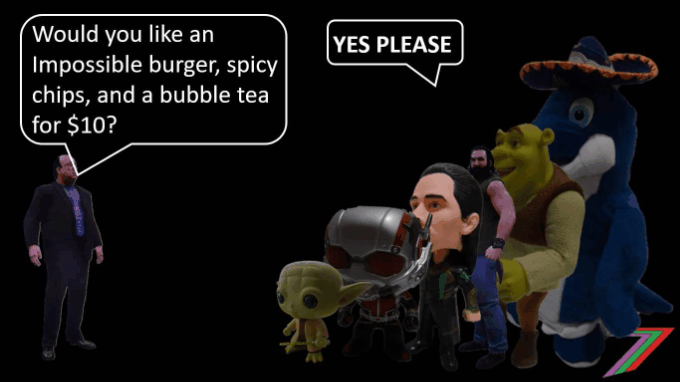
Bundling products can increase or decrease revenue and profits. Firms need to know which products to bundle together and how to price these products. The following is an example, using 20 people with different preferences for five products sold by one firm. Table 1 contains the willingness-to-pay of the 20 people for each product as well as all 5 products.
Table 1: Willingness-to-pay of 20 people for 5 products (values in $)
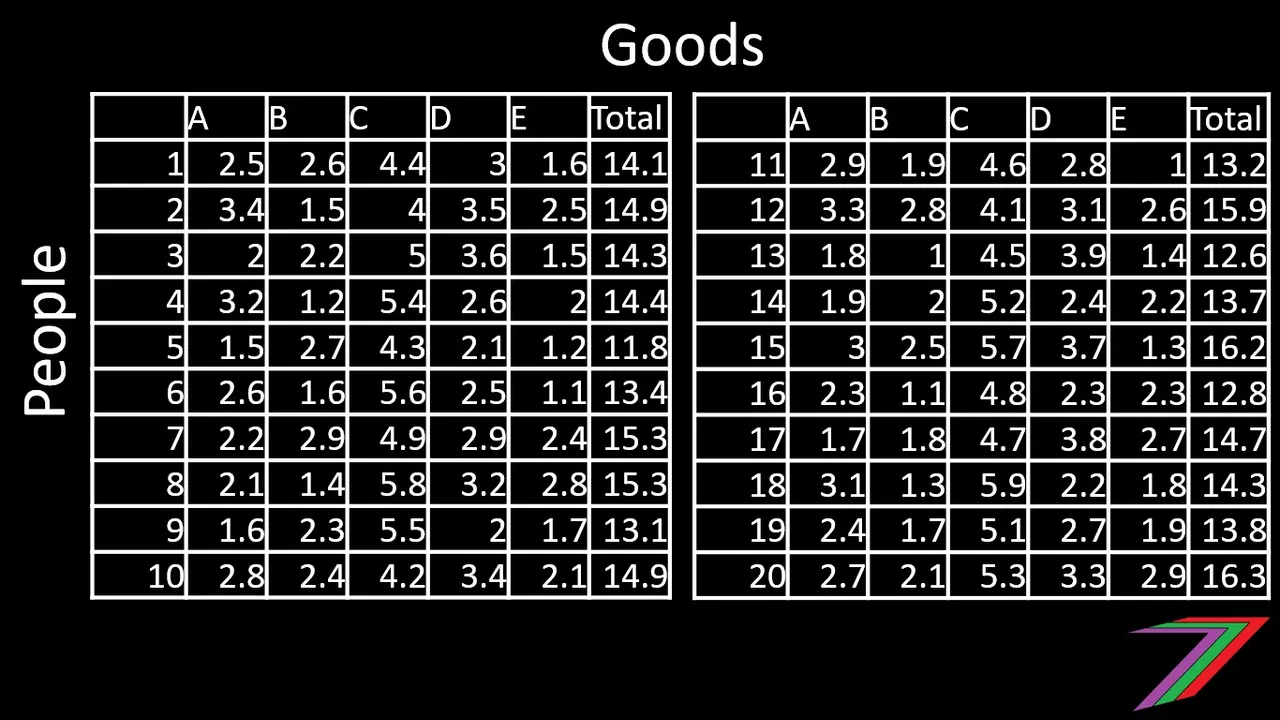
The willingness-to-pay for these 20 people can be combined to create demand schedules and demand curves for each product. In this example, I have allocated the willingness-to-pay for the goods in a linear pattern with a difference of $0.10 between people. The values shown in Table 1 can be represented in demand curves as shown in Figure 1.
Figure 1: Demand for Products A to E
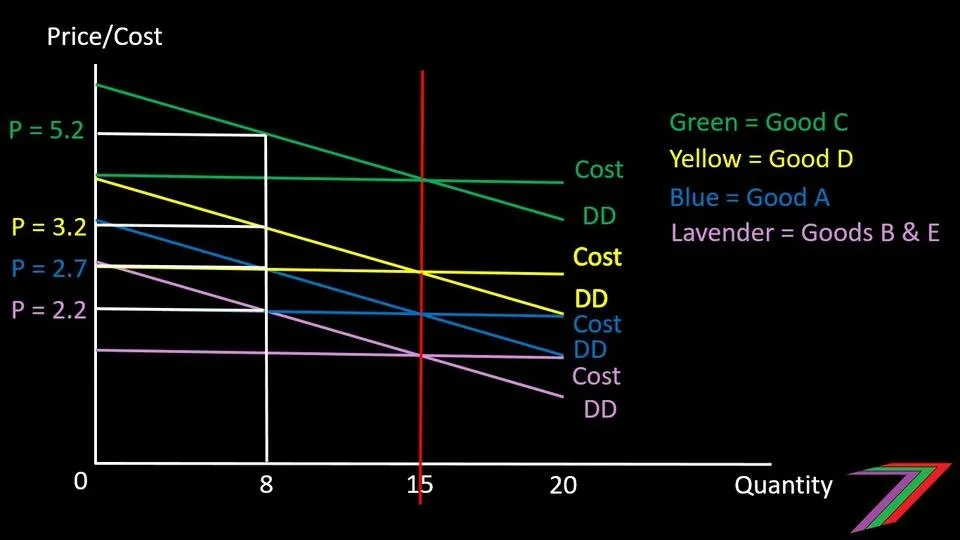
I have also assumed the cost of production for each product to be $0.50 higher than the lowest willingness-to-pay for that product. For example, the cost of production of product A is $2 (1.5 + 0.5). Therefore, the firm will only consider 15 out of the 20 people as possible customers for Product A, as there are five people not willing to pay more than $2 for Product A.
To maximise profits, the firm will sell each product at either $0.70 or $0.80 above cost. See, formulae below for proof.
Mathematical Proof Product A
P = 3.5 – 0.1Q (Demand Function for Product A)
C = 2 (Cost Function for Product A)
Profit = (3.5 – 0.1Q – 2) × Q (Price × Quantity – Cost × Quantity)
Equate profit differential to zero to maximise profit
Profit = 1.5Q - 0.1Q^2
δ Profit / δ Q = 1.5 – 0.2Q = 0
Q = 7.5
Round to either 7 or 8 as people cannot be halved.
Choose 8 in this example.
P = 3.5 – 0.1 × 8 = 2.7
Price = $2.70
Based on profit maximisation, the prices of the other products would be as follows:
- Price of B and E = $2.20
- Price of C = $5.20
- Price of D = $3.20
At the above prices, the quantity sold of each product would be 8. The maximum profits this firm could make would be $28 (0.7 × 8 × 5). Table 2 contains the breakdown of the number of products each person would buy.
Table 2: Products and number of products each person buys
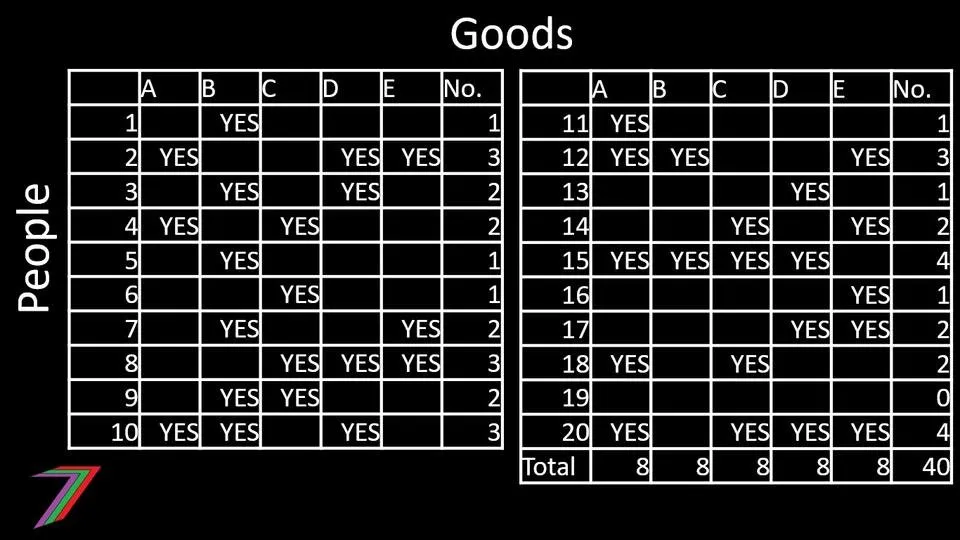
There are many ways this firm could bundle their products. To simplify the example, I will assume the firm sells all products individually or as one package, which includes all five products. Currently, none of the people buy all five products. The firm would need to reduce the price of the package sufficiently to entice at least a few people to buy the package. The total price of buying all five products is $15.50. For someone to buy the package, two criteria need to be meet. Firstly, the person needs to value the package higher than the price (i.e. willingness-to-pay > price). Secondly, the consumer surplus from buying the package needs to be higher than any combination of buying products separately. For example, buying the package needs to give the person a higher consumer surplus than buying the products they would have chosen prior to bundling; this could be Products A, B and D.
The price of $15.50, meets the first criteria for 3 people (persons 12, 15, and 20). However, all three of these people obtain a higher consumer surplus from buying their chosen products individually. If the price of the bundle is reduced to $14.40, the first criteria is met for 9 people and second criteria is met for 3 people (persons 7, 15, and 20).
Pricing the package at $14.40 generates a profit of $7.20 ((14.4 - 12) × 3) for the package. However, profit from selling products individually would fall. Persons 7, 15 and 20 would have bought a combined total of 10 products individually. This would reduce the profit by $7.00 (10 × 0.7). Selling the package at $14.40 would increase profit by $0.20 (0.7%).
We can also consider the additional profit from each person buying the package. See Table 3 below.
Table 3: Profit made from each person switching to package
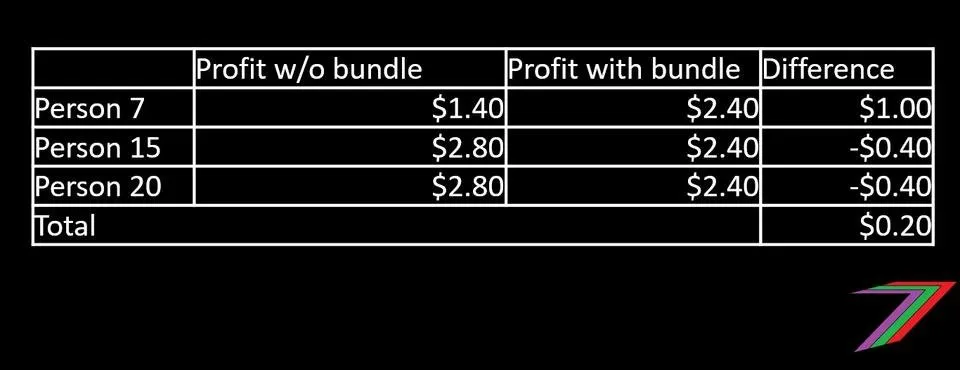
The additional profit is from Person 7 who would have only bought 2 products prior to the package. Persons 15 and 20 would have bought 4 products, which would have been more profitable for the firm. For the bundling to have been more profitable, the package would need to encourage people that bought 3 or less products to buy the package.
Competing with other firms
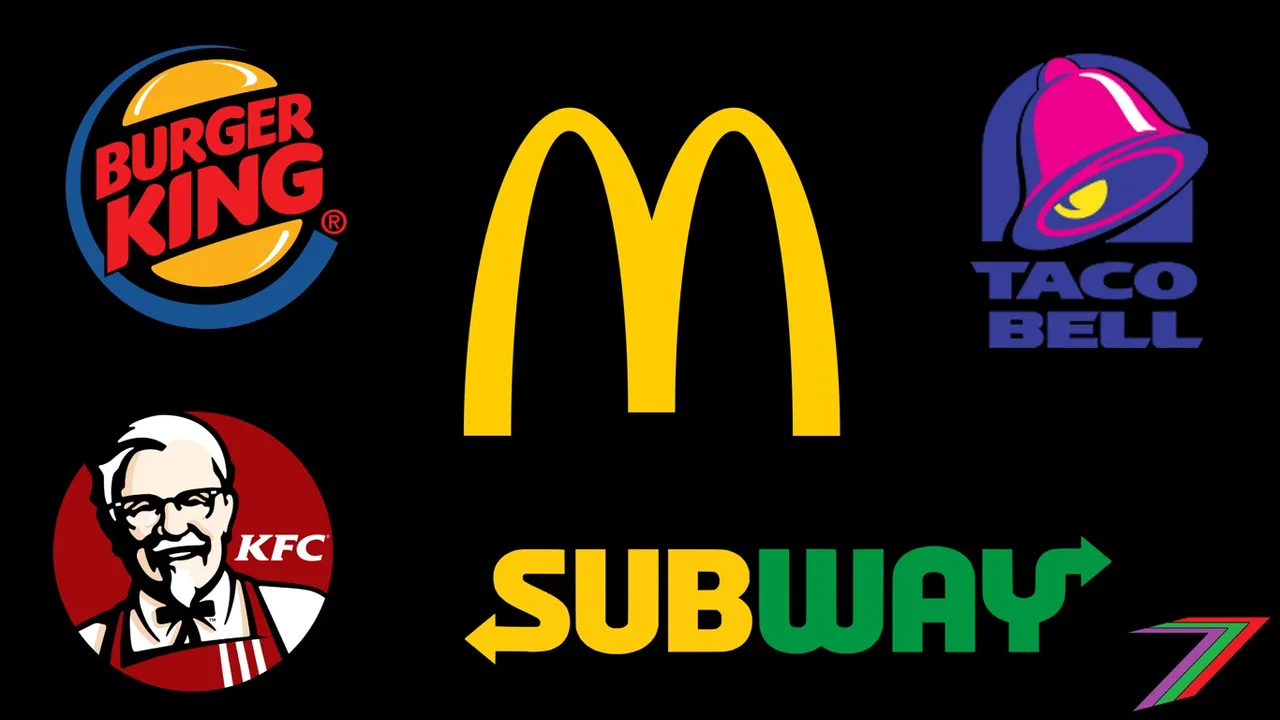
So far, I have only considered the profitability of commodity bundling from a fixed customer base. It is possible that bundling could attract customers from other competing firms. Imagine there are four other firms that sell very similar products at very similar prices and have a very similar customer base. The package might encourage 3 customers (same as the example firm) from each of those firms to buy the package. The firm would now have 15 people buying the package. The package would now generate a profit of $36 (7.2× 5) and overall profits would increase by $29 (104%).
This is a very optimistic example, as competing firms would most likely respond with their own packages of products. It is likely that customers will switch between firms based on how attractive they find the packages. The products that are packaged together and the price of the package will determine which firms will be more successful. In the case of the fast food industry, the types of products bundled and the prices of these products are similar. This is also because the fast food market is an oligopoly in many countries. See my post, 'Market Structure #4 - Oligopoly', for information about this market structure.
Bundling based on compatibility

Commodity bundling is more effective when the products combined are complementary in nature. Commodity bundling is an even more logical step when products are complementary and have designed compatibility. Home entertainment products are often compatible with just a few or even just one brand. A good example of this was Blu-ray and HD DVD formats. Most hardware played either Blu-rays or HD DVDs. Bundling hardware with the respective compatible disc would be a logical step to win dominance in the market. Sony incorporating Blu-ray compatibility into its PlayStation 3 console was an important step in Blu-ray becoming the dominant format.
Sony’s PlayStation 4 is a very good example of the use of commodity bundling to capture a large market share by locking users into their recent line of products. PlayStation 4 games are only compatible with the PlayStation 4 consoles. They are not backward compatible or compatible with other devices and consoles such as an Xbox. Bundling the PlayStation 4 console with PlayStation 4 games is a logical step to lock users into PlayStation 4 products. Some PlayStation 4 bundles also includes membership to the PlayStation Network as well as their new virtual reality headset.
Conclusion
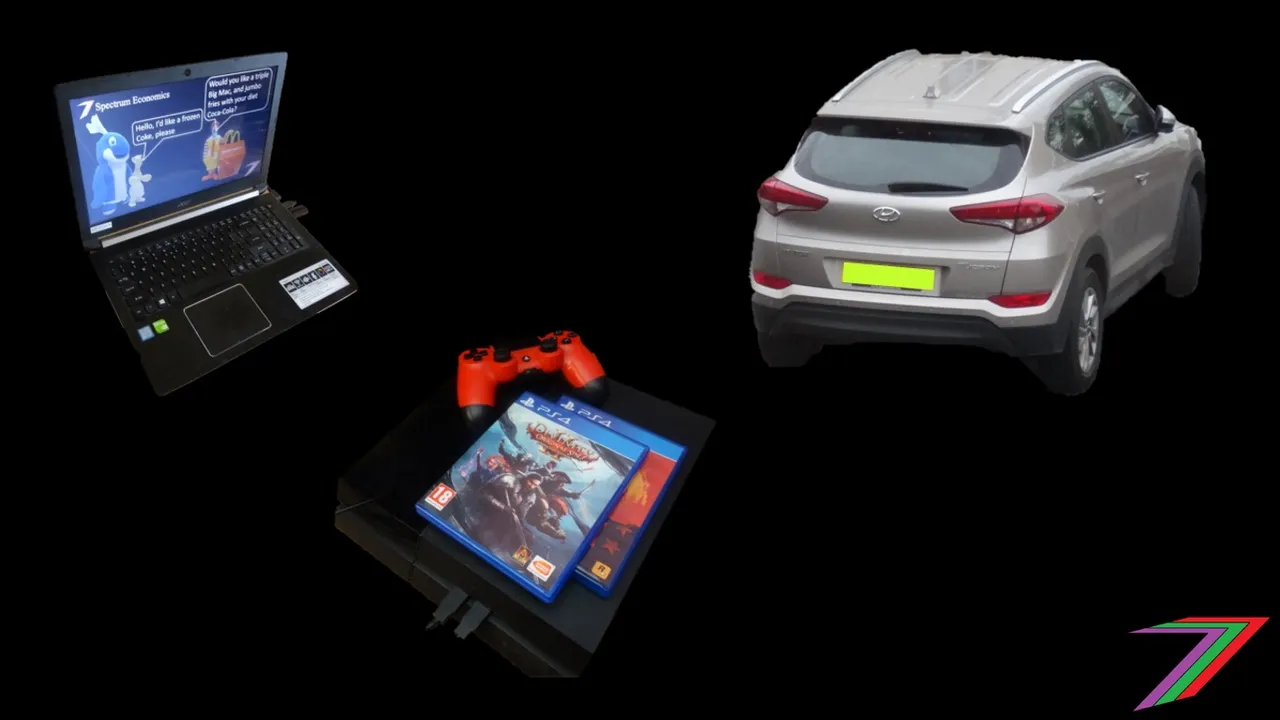
Commodity bundling can be beneficial to both buyers and sellers. Buyers can obtain what they want at a lower price. Sellers can produce a higher quantity and are able to acquire some of the consumer surplus to be more profitable if the right combination of goods are bundled at the right price. Commodity bundling is quite similar to second degree price discrimination as price selection occurs based on consumer choice rather than enforced by the firm. Price discrimination will be discussed in detail in another post.
This post has focused on commodity bundling in the fast food industry. Several other industries also practice commodity bundling. These other industries include computer hardware, computer software, home entertainment, office equipment, travel, car product, internet and mobile phone. Complementary products are often bundled together. Complementary products that lack compatibility outside of their own brand are often bundled together to lock users into a particular brand. This is very common with home entertainment systems.
I hope you enjoyed this post and found the information useful, feel free to comment below.
More posts

If you want to read any of my other posts, you can click on the links below. These links will lead you to posts containing my collection of works. These posts will be updated frequently.
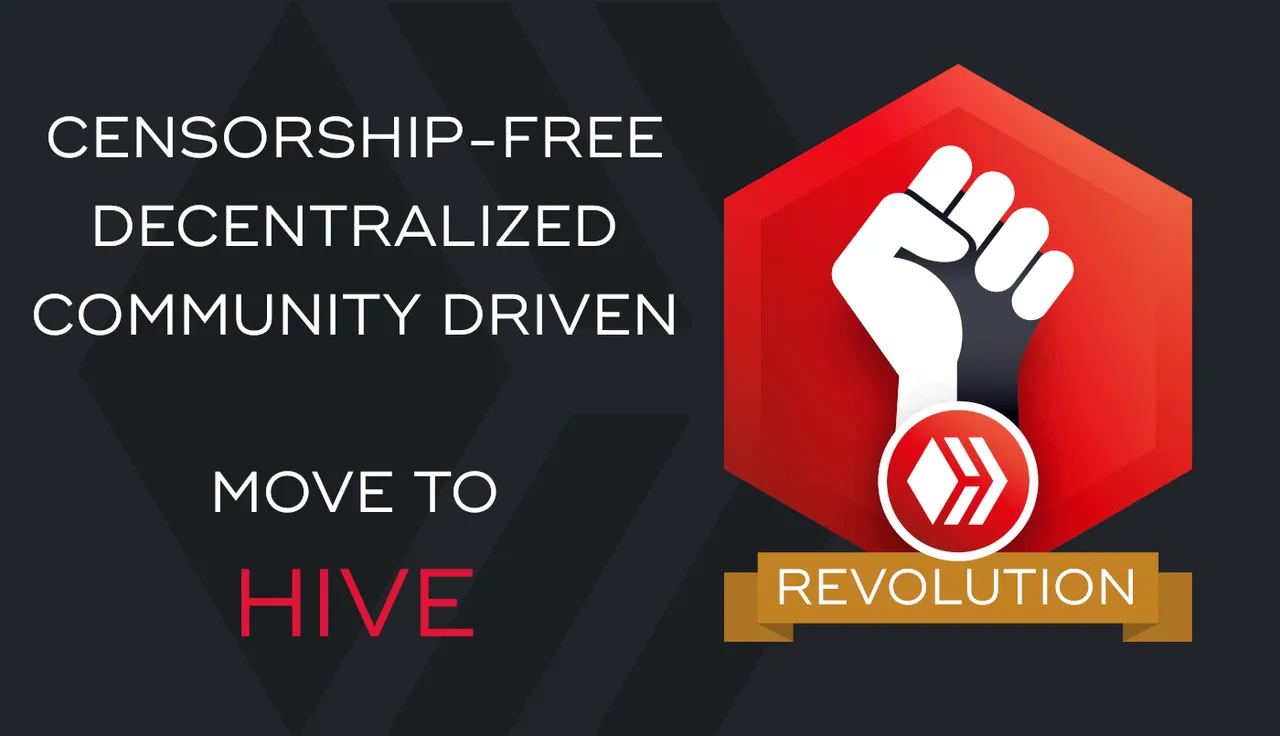



Steem - The Future of DApps
